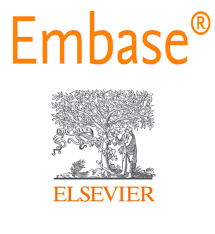OUTCOME ANALYSIS OF VP SHUNT SURGERY IN POST TRAUMATIC HYDROCEPHALUS AFTER DECOMPRESSIVE CRANIECTOMY
Keywords:
decompressive craniectomy; posttraumatic hydrocephalus, risk factor, traumatic brain injury.Abstract
Objective – Post traumatic hydrocephalus is one of significant complication post
DC.PTH has significant morbidity and mortality. In this study we study prognostic
and etiologic factors of PTH with outcome analysis.
Ethical Clearance – This study conducted at UPUMS SAIFAI between august 2022
to November 2022 after clearance from institutional ethics committee.
Material And Methods - This prospective study includes 103 patients who
underwent DC after TBI between august 22 and November 22 2022 at UPUMS
Saifai Hospital and were still alive at 6-month follow-up. It was prospective cohort
study. Various etiological factors and demographic factors correlated with outcom
Results – IN this study total 103 patients studied among them 21 devloped PTH
who undergone vp shunt. Low Glasgow Coma Scale (GCS) score, post DC
meningitis, and intraventricular hemorrhage (IVH)and SAH were significant
predictors for the development of PTH after DC. PTH patients showed impeded
recovery or low-pressure hydrocephalus symptoms, of whom 9 experienced
subjective clinical improvement after shunt treatment. TWO DC patients received a
shunt due to subdural hygromas of whom one improved following treatment. Four
patients were vegetative with concurrent ventriculomegaly and these patients did not
have any positive shunt response. Altogether, 11 PTH patients improved after shunt
surgery.
Conclusion: Post-traumatic ventriculomegaly was common, but few developed
symptomatic PTH and received a VP-shunt. Patients with low-pressure
hydrocephalus symptoms had the best shunt response, whereas patients with
suspected vegetative state exhibited a minimal shunt response.
.png)









